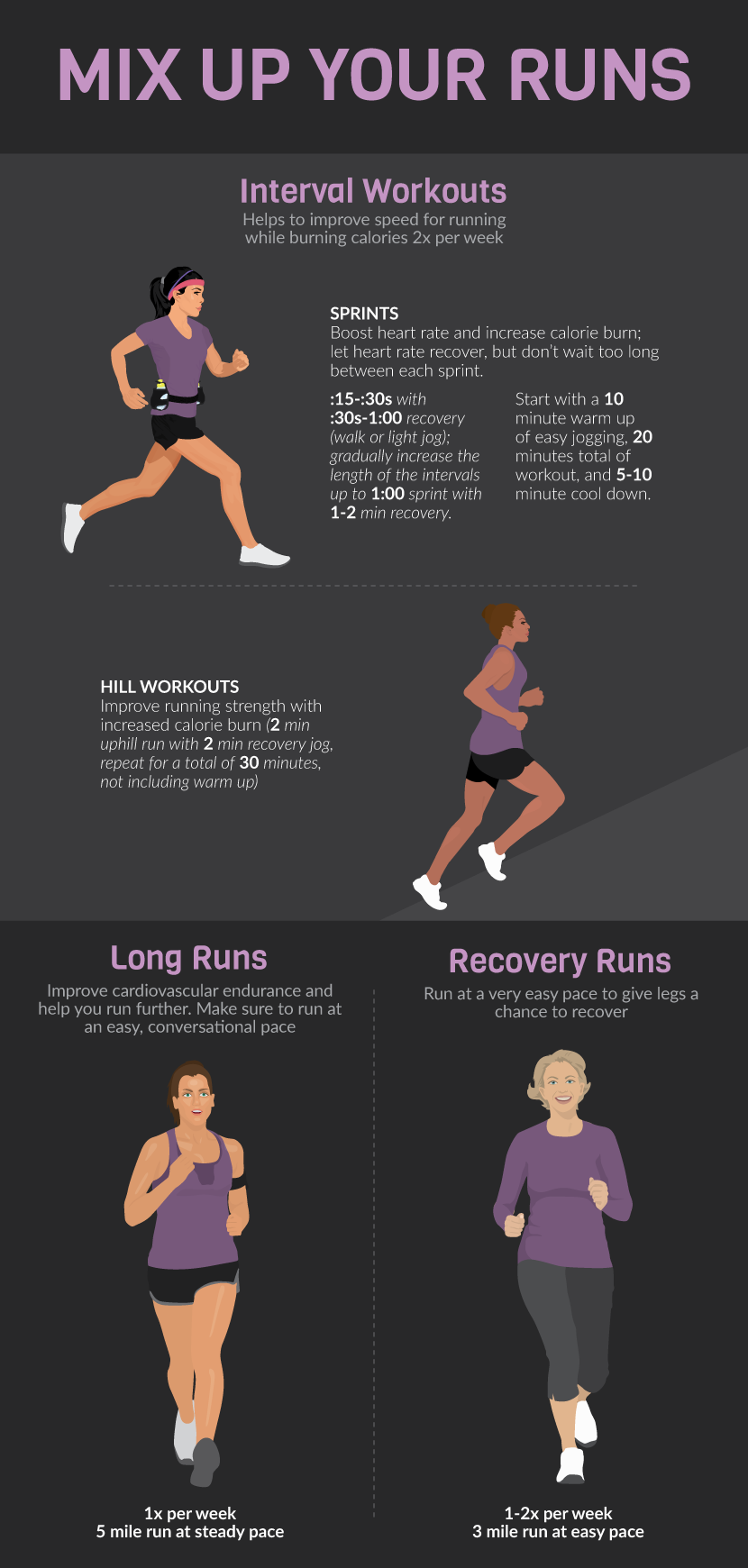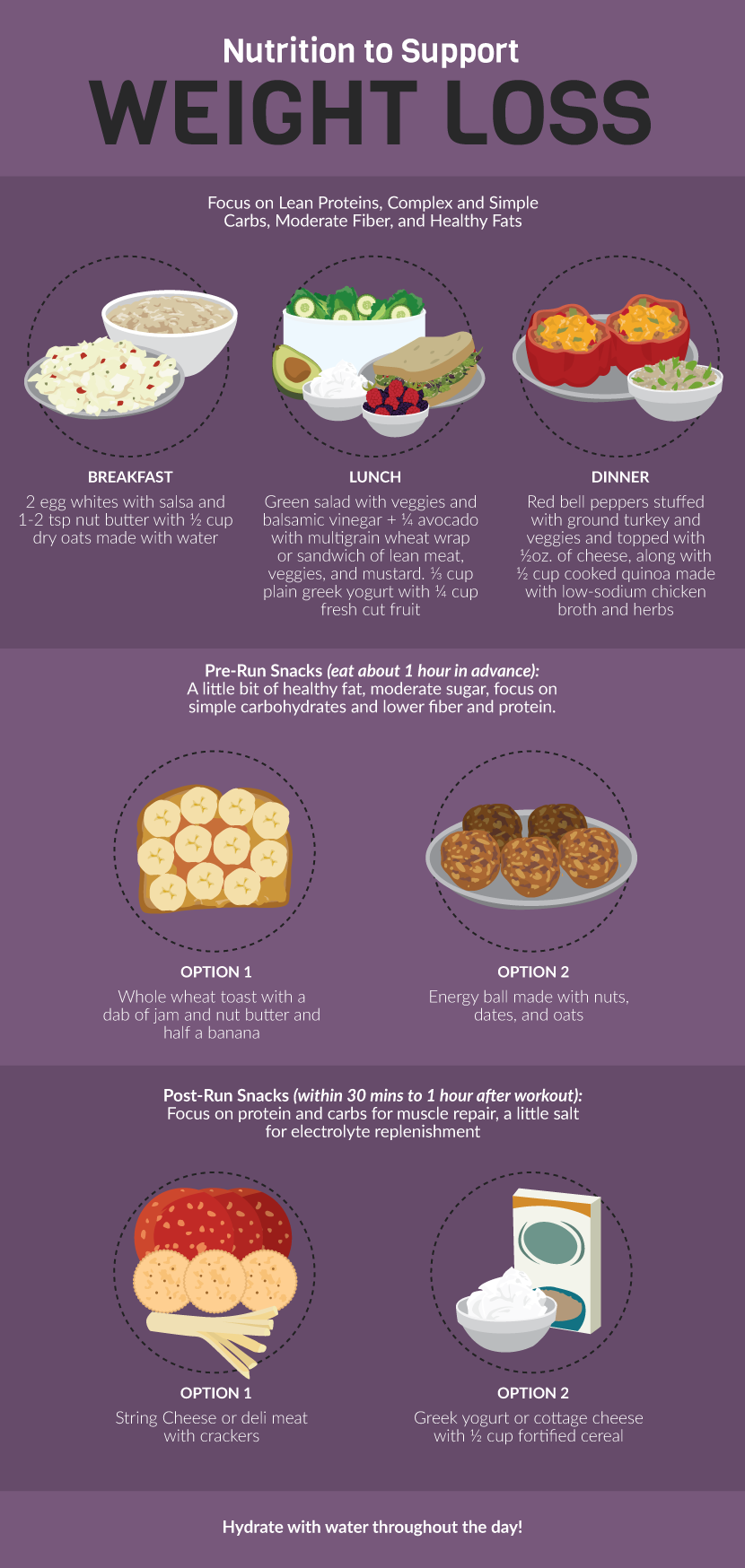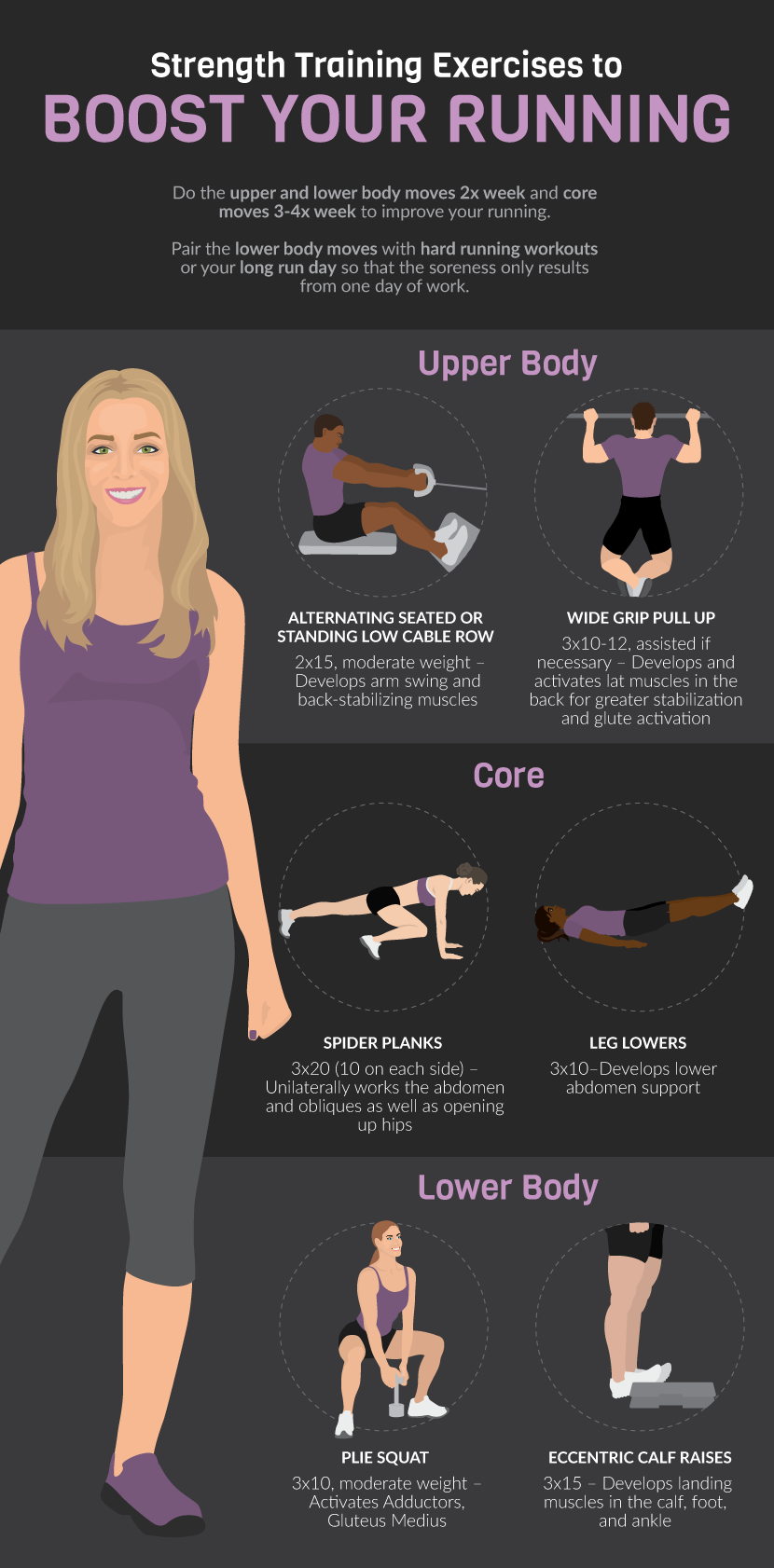Running for Weight Loss
An Efficient Way to Burn Calories
Running is perhaps the most accessible and efficient exercise for weight loss, but it’s more than just a quick fix.
A carefully crafted running program can boost weight loss significantly and also provide an affordable, travel-ready workout that adds enjoyment to your life.
Incorporate running into a sustainable, engaging, and effective fitness regimen,
and lose weight while gaining lifelong health. Dare we say it? You may even learn to love running!
If you’ve never run regularly before, the way to get started is actually by not running. Too often,
people jump into running thinking that they’ll just run until they get tired and work to increase that each time.
What you should do instead is work on a run/walk program: run for a designated amount of time and then walk for a certain amount of time.
While walking might seem counterintuitive as a way to burn calories, taking this rest interval – where you’re still working and moving, not dawdling –
will enable you to prolong the amount of time you spend exercising and thus to burn more calories! It will also help reduce your risk of injury.
The second tenet to keep in mind when running, be it for weight loss or otherwise, is the right mix of consistency and variety.
You want to devise a weekly program that is sustainable for your lifestyle as well as your body – otherwise, you aren’t going to keep up with it!
Within that sustainable, consistent program, variety ensures that your body has to work to adapt, your calorie burn stays high, and you progress as a runner.
The next most important component of running for weight loss has to do with nutrition. Without a diet that supports your running –
meaning that you get enough calories and enough of the right nutrients to help your body repair and sustain your workout schedule,
while still maintaining a calorie deficit for weight loss – you’ll find that you plateau or even lose (or gain) too much weight.

To find the right balance, try to tune into hunger cues. Running often results in something runners call
“runger,” or running-stimulated, seemingly insatiable hunger and munchies.
To combat runger, focus on a balanced diet of lean protein, complex carbohydrates, fiber, and simple carbohydrates –
but at the right times. Nutrient timing can be just as important as the nutrients themselves.
Strength training is another important component of any running program. By incorporating strength and resistance training into your overall running routine,
you’ll not only prevent injury, but you’ll also increase your lean muscle mass, which in turn raises your resting metabolic rate (i.e., you’ll burn more calories at rest).

If you want to lose weight, remember that although you may have a slightly elevated metabolic rate, and you’re running and burning many more calories per hour,
and you have a substantial after-workout burn, you must continue to watch what you’re eating!
Running isn’t a free pass when it comes to food; alternatively, though, you must also make sure not to eat too little.
Focus on those hunger cues and not just on eating when you’re bored, and follow up workouts with a combination of protein, carbohydrates, and healthy fats.
Now, what about the workouts?
As for the debate between steady-state and high-intensity interval training (in exercise classes as well as in running),
high-intensity will burn more calories per minute, but you will be executing that workout over fewer minutes.
High-intensity and high-impact running and exercises are also very hard on your body,
so having a mix of intense workouts as well as steady-state running will give you the chance to recover while also continuing to work out and lose weight.

Make sure you begin every workout with a warmup of gradually increasing intensity, starting with an easy walk and ending with a jog.
This should take five minutes at the absolute minimum, and longer if you’ve been sitting or are in a cold environment (or both, as many of us who work in offices know!).
A proper warmup will prepare your body for the workout to come, help prevent injury, and even boost the effectiveness of the workout.
During your workout, try to keep the rate of perceived exertion elevated, unless it’s a recovery day or a recovery interval.
Heart rate monitors can be very helpful for those looking to lose weight, but just paying attention to how hard you’re working can be telling enough.
Your work intervals should generally be at a 7 or 8 out of 10 –
meaning that you can’t speak more than three to five words at a time, or you’re not interested in talking at all!
Make sure the recovery intervals bring you back to a pace and heart rate that is “conversational,” or where you can speak in sentences.
And don’t just stop moving during your recovery intervals – power walk or do an easy jog.
Finally, don’t forget about your cooldown. Even taking five minutes to walk and then five minutes to stretch after your run will help you decrease soreness and prevent injury.
Your body is going to continue to adapt to the stress you’re putting on it, so you’re going to have to continue challenging it.
Don’t be afraid to increase your workload over the weeks,
but also be sure to incorporate what’s called a “cutback week,” where you decrease your workouts in length or intensity (or both) every two to three weeks.
Doing so will give your body a break and allow you to come back ready for another cycle of building.
Dedication to this combination of nutrition, proper workout programming, and strength training over weeks, months,
and even years will help you lean out and keep the weight off for good.
There are numerous other benefits to running as well, from stress relief to a new way to see a city.
Like any new pursuit, developing a running program will be hard work, but if you stay with it, running can truly transform your life and your body.
Embed the article on your site

